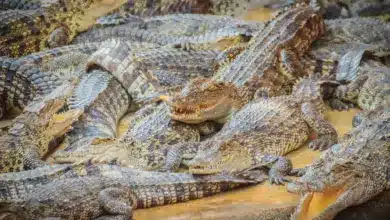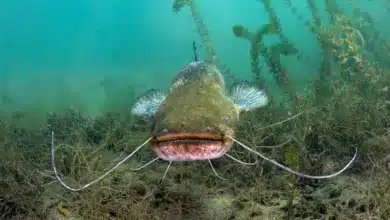Rain Forest Snakes
Snakes Of The Tropical Rain Forests
Rain forests the world over provide wonderful habitats for snakes of all sizes and kinds. Not only are rain forests warm enough to allow snakes to be active all year long, but they are shady at ground level as well as wet, conditions that save snakes from having to seek refuge from the sun during the middle of the day. Add to that the fact that there is plentiful prey of all kinds: rodents, frogs, birds, insects, other reptiles, large mammals, and even other snakes—and you have a true snake paradise.
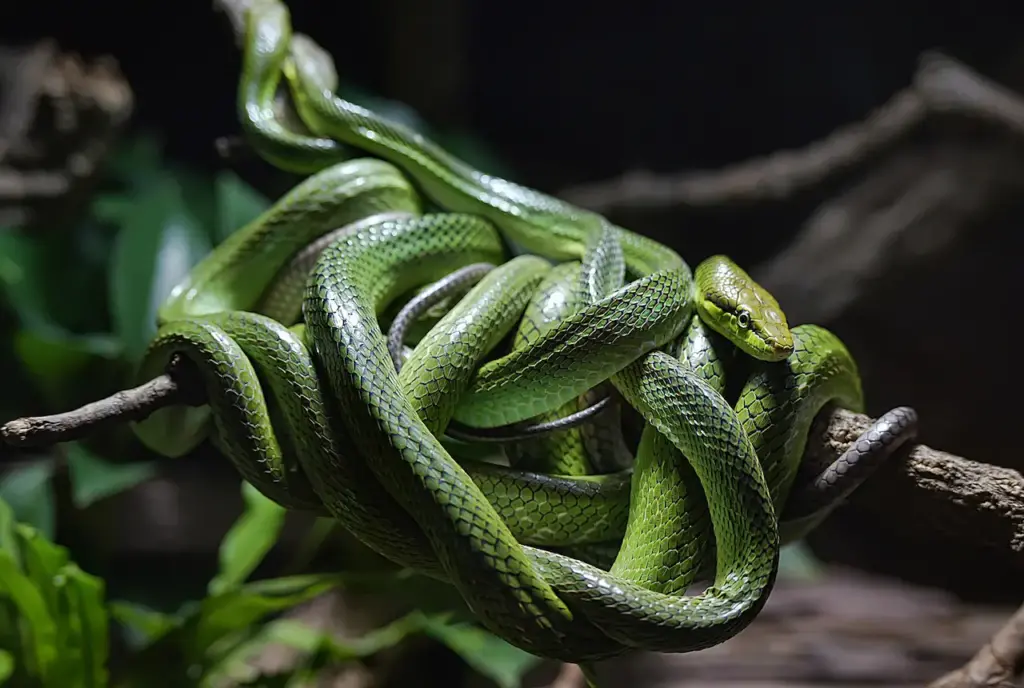
Generally speaking, there are two broad types of rainforest snakes: venomous snakes, which kill their prey with a venomous bite, and nonvenomous snakes, which kill either by squeezing the creature to death—these snakes are called “constrictors”—or by simply grabbing the creature and swallowing it whole as it struggles to escape. In addition, some non-venomous snakes discourage other animals from attacking them through their close resemblance to one or another species of venomous snake. One example would be the non-venomous false coral snake, which looks remarkably like the highly venomous coral snake of the American tropics and subtropics.
Not all constrictors are huge; some are small to medium-sized. However, some are quite large—the biggest snakes not only in the world’s rainforests but everywhere else as well. You can read more about the big snakes of the rainforest here.
As far as all the other snakes are concerned, there are more kinds of snakes in the world’s rainforests than in any other type of habitat, with the rainforests on each continent having their own, individual array of species.
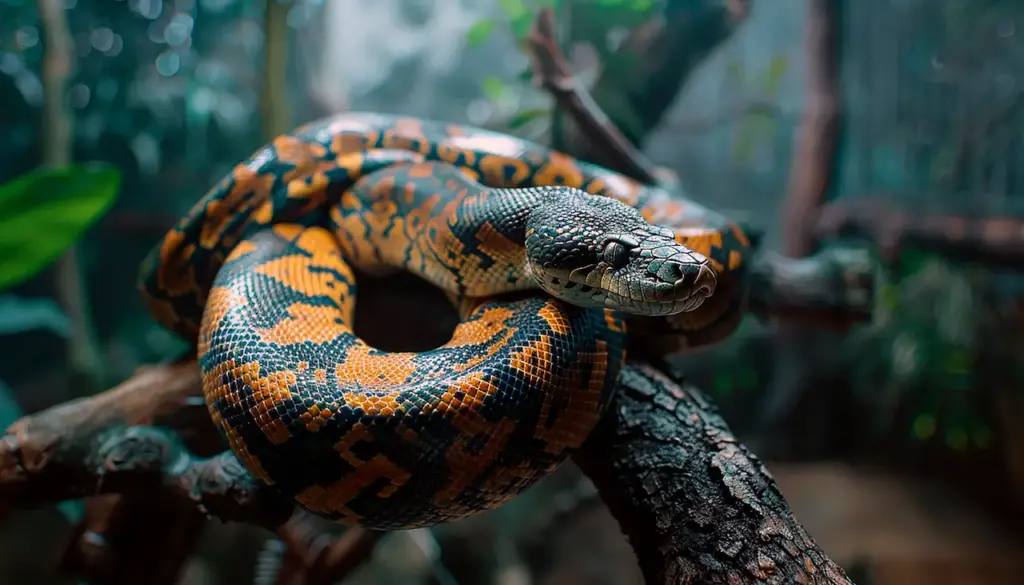
In the rain forests of Africa and Asia, the many species of cobras are among the most common, and most feared, venomous snakes. Especially infamous is the king cobra of southern and Southeast Asia; the king cobra can grow to a length of over 18 feet (5.6 meters), and is the world’s largest venomous snake.
The rain forests of southern and Southeast Asia are also home to some 12 species of kraits, almost all of which are short (generally no longer than 1.5 meters, or 4 feet) in length, but are highly venomous.
Africa’s rain forests, meanwhile, in addition to serving as habitat for cobras, also contain a few species of highly venomous snakes called mambas—there is a black mamba, and a green mamba (above). Both the eastern and western species of the green mamba spend most of their time in trees. Another quite dangerous, African rain forest snake is the Gaboon viper, a stoutly built snake which, at an average length of 4 to 5 feet (1.5 to 1.75 meters) is the world’s largest and heaviest viper, as well as the one that has the longest fangs (2 inches, or more than 5 centimeters) and that produces the most venom.
(Vipers, by the way, are venomous snakes that have long, hollow, hinged fangs that they use for injecting venom into another creature. The venom comes from glands near the back of the snake’s upper jaw and, once a viper is done biting, its fangs fold into the back of its mouth. (The rattlesnake is one American example of a viper.) Venomous snakes that are not vipers have fixed fangs.
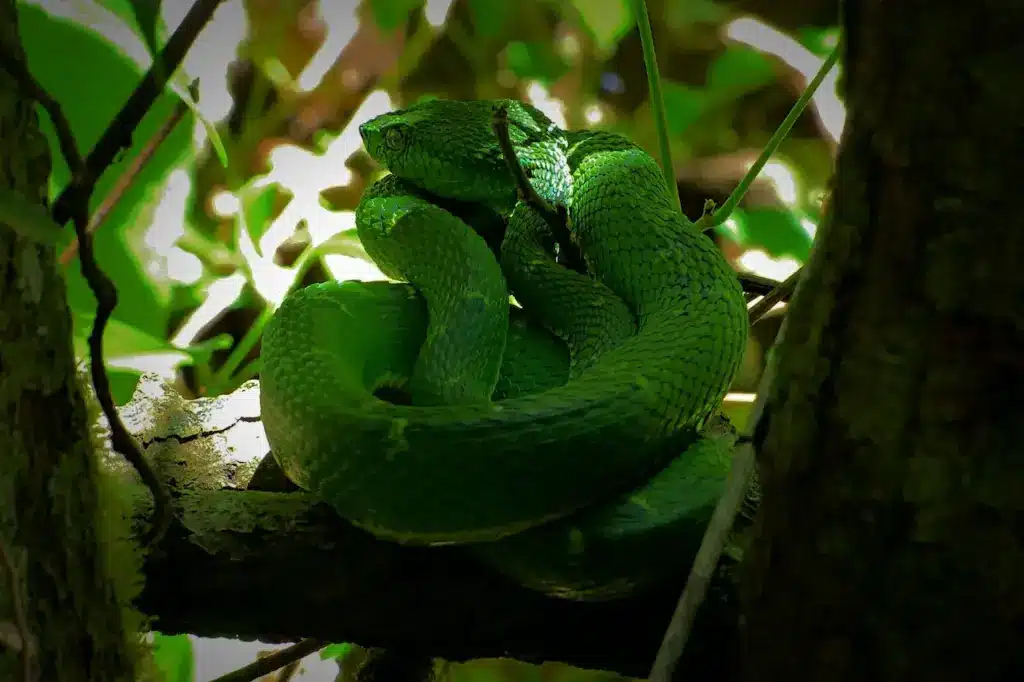
On the American side of the Atlantic, venomous rainforest snakes include the previously mentioned coral snake, as well as the fer-de-lance, and the bushmaster, both of which live in the Amazon rain forest. The fer-de-lance generally reaches a length of under three feet, while the bushmaster can grow to over 8 feet (2.5 meters) and is especially feared for its ability to bite multiple times.
The Australian rain forest, meanwhile, is home to a frightening variety of venomous snakes. Perhaps the most well-known is the coastal taipan, a brownish snake that not only grows to a length of around 3 meters (nearly 10 feet) but is thought by some scientists to have the third most potent venom of any snake on the planet. In fact, taipan venom is particularly dangerous to humans because we are mammals—and taipans have evolved to specialize in being mammal hunters, and therefore have a venom that is especially toxic to creatures like us—although, of course, the taipan’s normal prey is much smaller than a person.
Lastly, despite the fearsomeness of many species of rainforest snakes, both venomous ones as well as constrictors, it is important to remember that, just like most rain forest creatures, they have been losing an alarming amount of habitat to the rapid deforestation of our planet’s tropical areas. In fact, some species of rain forest snakes are listed as Endangered or Threatened by the International Union for the Conservation of Nature (IUCN). These species deserve just as much protection as any other rainforest animal.
